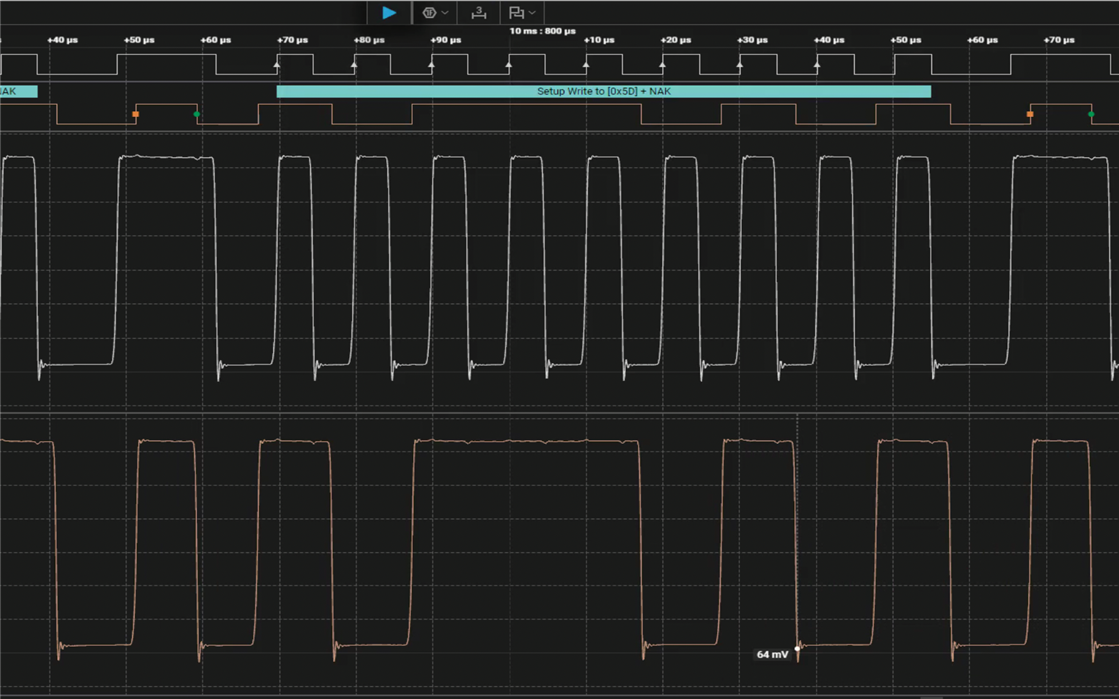Other Parts Discussed in Thread: TMDS1204
Tool/software:
Hi everyone,
We've developed an HDMI 2.1 FPGA development board using the TDP1204 and TMDS1204 devices. On approximately half of the boards, the device does not respond to I2C communication.
Here are the configuration details:
-
MODE pin: Floating (I2C mode)
-
VCC: 3.3V
-
VIO: 1.8V
-
I2C lines (SCL/SDA): 1.5kΩ pull-up resistors to VCC
-
EN pin: 1kΩ pull-up to VIO and a 100nF decoupling capacitor
We've tried accessing all supported I2C addresses (0x5B, 0x5C, 0x5D, 0x5E), but the device doesn't acknowledge any of them.
I’ve attached a scope capture of the I2C communication. The I2C interface runs at 100 kHz.
Additional observations:
-
The HPD_OUT pin is high.
-
When I force the EN pin low, HPD_OUT goes low.
-
Releasing EN (allowing it to be pulled high to VIO) causes HPD_OUT to go high again.
Does anyone know why the device might not be responding to I2C?
Any insight or suggestions would be greatly appreciated.
Thanks!
Marco
======






